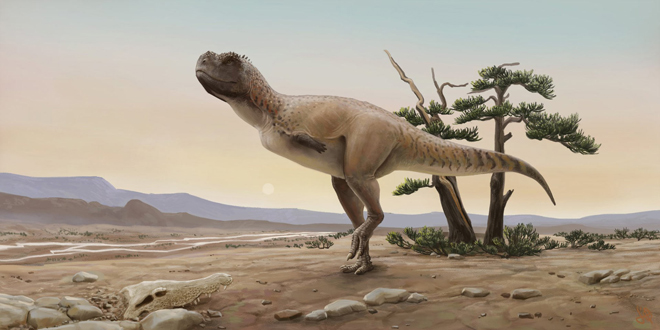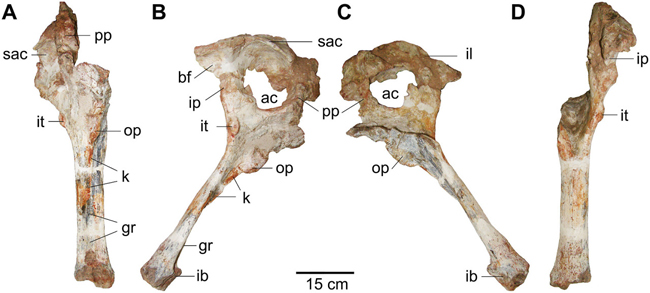New Species of Abelisaurid Described
A team of international researchers have identified a new species of Late Cretaceous carnivorous dinosaur from fragmentary fossil bones found in south-eastern Brazil. The dinosaur has been named Kurupi itaata, the strata from which the fossils came were laid down in a very arid environment, as such, Kurupi itaata is the first named tetrapod from the Late Cretaceous Marília Formation (Bauru Group).

To read a recent article about a new abelisaurid from Argentina: A New Abelisaurid from Argentina.
Bones from the Tail and a Partial Pelvic Girdle
Described from three tail bones (caudal vertebrae) and a partial pelvic girdle, the research team were able to identify anatomical traits that led them to conclude that Kurupi was an abelisaurid. Estimated at around five metres in length, its discovery provides further information on the dinosaurs that inhabited South America around 70 million years ago (Maastrichtian faunal stage of the Late Cretaceous).
Analysis of muscle attachment scars associated with the pelvic girdle and an assessment of the shape of the tail bones indicating a rigid tail suggest that Kurupi was a strong runner. The fossil bones come from the Municipality of Monte Alto in the state of São Paulo.
The dinosaur was named after a monstrous child from the Guarani indigenous culture – Kurupira. A child of evil spirits in local legend Kurupira is the lord of forests and the protector of all the animals that lived in them as well as being a God of fertility and sexual prowess. The species or trivial name “itaata” refers to the extremely hard surrounding rock matrix that proved difficult to remove.

Potentially More Dinosaurs?
The presence of a large predator suggests that the fossils of herbivorous dinosaurs might be found in the Marília Formation, although it is not known whether Kurupi was a permanent resident of the arid, Late Cretaceous environment represented by the deposition or whether it was a seasonal visitor.
Described as a mid-sized abelisaurid, its discovery provides further information of the diversity of the Abelisauridae in western Gondwana, although a phylogenetic analysis proved inconclusive and this dinosaur’s taxonomic placement within the Abelisauridae remains uncertain.
The scientific paper: “New theropod dinosaur from the late Cretaceous of Brazil improves abelisaurid diversity” by Fabiano Vidoi Iori, Hermínio Ismael de Araújo-Júnior, Sandra A. Simionato Tavares, Thiago da Silva Marinho, Agustín G. Martinelli published in the Journal of South American Earth Sciences.
Visit the award-winning Everything Dinosaur website: Dinosaur Toys and Models.

